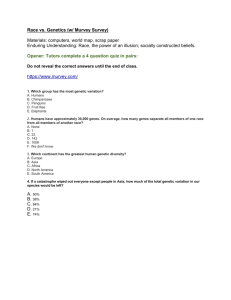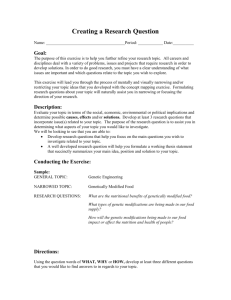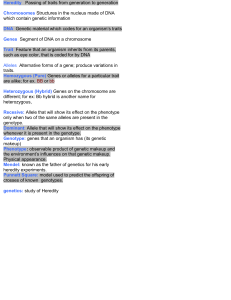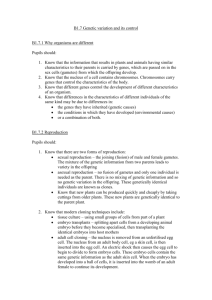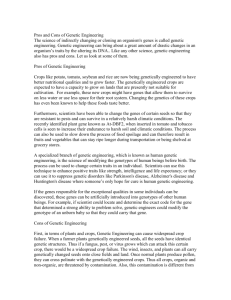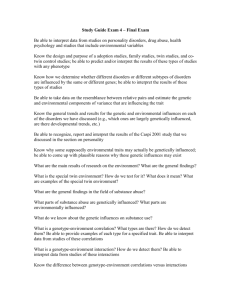Race as a Social Construct Materials: computers, world map, scrap
advertisement
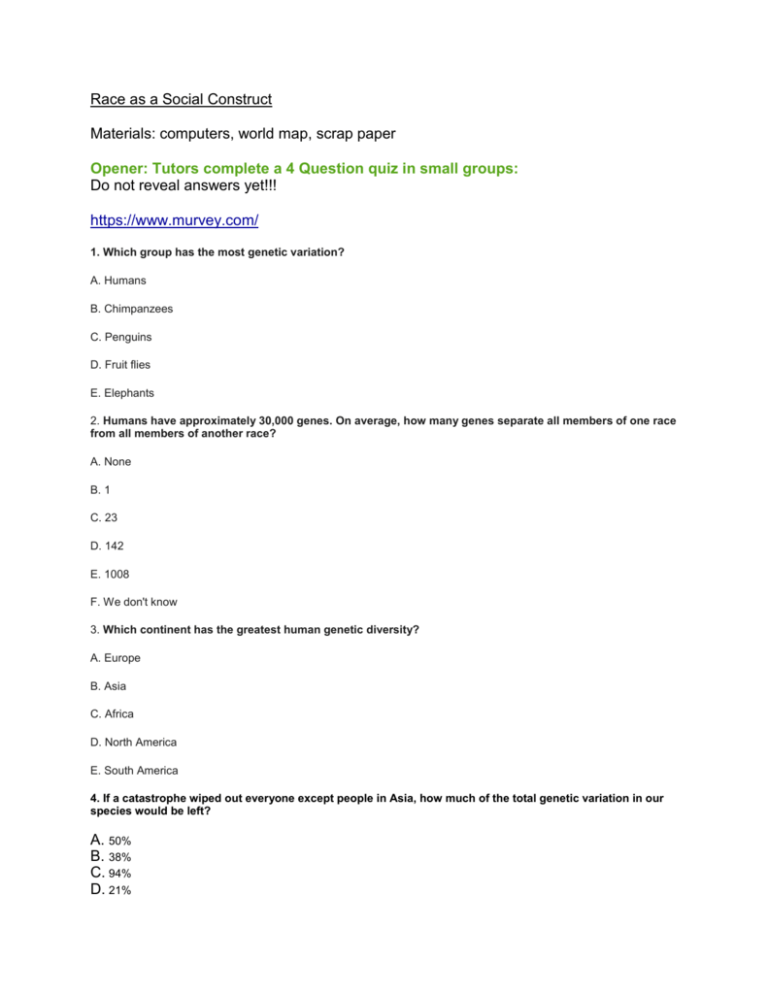
Race as a Social Construct Materials: computers, world map, scrap paper Opener: Tutors complete a 4 Question quiz in small groups: Do not reveal answers yet!!! https://www.murvey.com/ 1. Which group has the most genetic variation? A. Humans B. Chimpanzees C. Penguins D. Fruit flies E. Elephants 2. Humans have approximately 30,000 genes. On average, how many genes separate all members of one race from all members of another race? A. None B. 1 C. 23 D. 142 E. 1008 F. We don't know 3. Which continent has the greatest human genetic diversity? A. Europe B. Asia C. Africa D. North America E. South America 4. If a catastrophe wiped out everyone except people in Asia, how much of the total genetic variation in our species would be left? A. 50% B. 38% C. 94% D. 21% E. 74% Activity: Introduce Emily Cutting and Alicia Keys Ask tutors “Where might their nationalities and family roots be in the world?” and record on scrap paper. After hearing from a few groups, Sharon reveals their backgrounds. Activity: Race Video Watch video clip (1:40 - 2:11) (2:28 - 3:45) http://newsreel.org/video/RACE-THE-POWER-OF-AN-ILLUSION Ask tutors to look around the room. Ask, “If we extracted DNA samples from each and every one of you, who do you think you’d be most similar to genetically?” to elicit some common misconceptions about our appearances. What did the DNA analysis show us? Black male and white female were most similar genetically. Activity: Face Sorting - Power of illusion http://www.pbs.org/race/000_General/000_00-Home.htm Students complete the Sorting People Activity. Students can then move on to the "Explore Traits" activity where the same 20 people are re-sorted according to skin color, blood type and fingerprint type. “Is Race Physical?” Ask after the activity, “Can we group people according to appearance?” We sort people everyday, assuming their backgrounds, whether it be your students or someone walking down the street. You should never assume someone’s identity based on one trait that we can see. Activity: Review Quiz answers - show results Bar graph/pie chart of poll results: https://www.murvey.com/report?533a1011271ee54b0c000172&key=UqmJk REVEAL ANSWERS TO QUIZ 1. Which group has the most genetic variation? ANSWER: Fruit flies. Fruit flies have been around for a very long time, but they also have a short life span, so lots of genetic mutations have accumulated over many generations. In contrast, modern humans are one of the most genetically similar of all species. This is because we are a relatively young species, and we simply haven’t been around long enough to accumulate a lot of genetic variation. Also, humans have always moved, mixed and mated, so genetically speaking, we're all mongrels. Beneath the skin, we're all very similar. 2. Humans have approximately 30,000 genes. On average, how many genes separate all members of one race from all members of another race? ANSWER: NONE. There are no traits, no characteristics, not even one gene that distinguishes all members of one so-called race from all members of another. The A, B, O blood groups can be found in all the world’s peoples (Estonians and Papua New Guineans, for example, have the same frequencies). Skin color tends to correspond with latitude not race; sub-Saharan Africans, Dravidians and Tamils from Southern Asia, and Melanesians from the Pacific all have very dark skin. Ancestry is difficult to trace. Go back 30 generations, less than 1,000 years, and you have a billion ancestors. 3. Which continent has the greatest human genetic diversity? ANSWER: Africa. All modern humans originated from Africa, and we spent most of our evolution as a species together there. All the other populations of the world can be seen as a subset of Africans – every human trait found elsewhere can also be found in Africa, with the exception of a few recent variations favored by the environment or sexual selection – such as light-complected skin. 4. If a catastrophe wiped out everyone except people in Asia, how much of the total genetic variation in our species would be left? ANSWER: 94% This is because most variation is within, rather than between, races. On average, any local population contains 85% of all human genetic variation, and any continent contains 94%. This is because humans have always migrated and mixed their genes. Two random Swedes, for example, are likely to be as different as a Swede and a Senegalese. - Present scientific evidence that debunks race as a biological construct. - Help students examine their preconceptions and assumptions about racial categories and understand the impossibility of constructing a consistent system of human racial classification. Why do we assume that traits like skin color are more meaningful than whether or not your tongue curls or whether or not your earlobes are attached? Take away: Culturally relevant teaching in all subjects- even science We often mistake race for family backgrounds, nationalities, ethnicities, countries of origin There are biological factors (inherited traits) that conflict with preconceived ideas of “race”. - major paradigm shift > race is biological to race is a social construct
